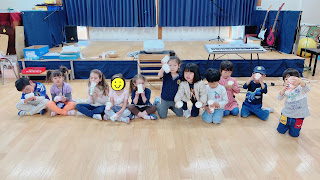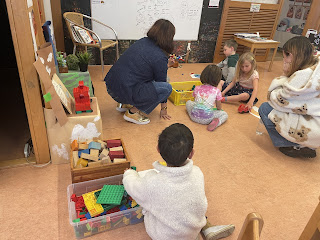28: Fly Me To The Moon
"That's one small step for man, one giant leap for mankind."
-Neil Armstrong
Imagine a school unlike any other, nestled among the craters and mountains of the moon. A place where students can gaze out of the classroom windows and see the Earth, a distant blue planet floating in space. It may sound like the stuff of science fiction, but with advancements in technology and space exploration, building a school on the moon does not seem like a distant and impossible dream.
This week, DSKI celebrated STEM Week with a challenge for all the students:
Can we build a school on the moon?
The children were not 100% sure if we could do it but they were eager to try.
Since the kindergarteners learned about the different forms of transportation for our How We Organize Ourselves unit, we gladly accepted the challenge to build the transportation that will take the whole DSKI community, as well as the resources we need, to survive and thrive on the moon.
I asked the children, what transportation do you think should we use to go to the moon?
The children had different ideas and interesting insights. Have a look:
One of them said, “We can build a flying car!”
Then one answered, “But that’s not real, it’s like Harry Potter, magic.”
One said, “But it can happen in the future!”
(I wonder if they know Back To The Future, too! 😆)
We explored some space books and decided that the best transportation to build is a rocket.
Unfortunately, we don’t know how rockets work. All we know is that fire comes out of its tail and it flies way up in the sky until it gets to space.
We tried some experiments to learn about the force that blasts the rocket up to space. First, we tried simple materials, such a cups and rubber bands.
We discovered that when we push the cup down and let go, it flies up to the air. The harder we push, the higher it gets.
The second experiment we tried, involved a chemical reaction. We used some recycled materials, such as bottles and corks. We also used cooking and baking ingredients, such as vinegar and baking soda. When we mixed them together inside the bottle and closed it with the cork, the bubbles and air that were trapped inside pushed themselves out and made the rocket fly high up into the air.
(Note: We also showed this video in the STEM exhibit to explain how rockets work)
After finding out how rockets work, it was time to design a prototype. The children tried making their own interpretation of what a rocket looks like using different materials in the classroom.
When they were done, we were ready to build a bigger version using cardboard boxes. Since rockets have different parts, we shared the project with Pre-Kindergarten and Kinder 1. We were tasked to create the part of the rocket that houses all the resources that will be brought to the moon.
First, we painted the rocket. It was a team effort -- messy but definitely fun!
Second, we had to interview the different members of the school community to find out what they need for us to put in the rocket.
There were so many essential things that need to be packed, so we organized them in shelves and labelled them according to what they're used for.
When we were done, we assembled the rocket. The finishing touch was putting the school logo on the rocket.
Of course, we had to test the safety of our rocket, too. We tried simulating a flight to see how it will work. We fastened our seatbelts and prepared for a bumpy ride -- but it turned out to be a smooth one.
The week ended with the whole community getting together for STEM Week. The kindergarteners had a chance to share what they made with their parents, as well as learn from and experience what the other classes made for our journey to the moon.
We were also lucky to learn something new from Mr. Can Yaldiz, a diaper engineer who helps astronauts. The children were interested to learn about how astronauts "do their business" in space without access to toilets. They found out that the diapers they used when they were younger was the perfect solution as they have “magic crystals” that absorb liquid. They also got to meet a special stuffed astronaut, which I think was one of the highlights for them. 😆
It was definitely fun to become astronauts for a day. The children were also given their astronaut certificates for all their hard work, contribution, and collaboration.
It was beautiful to see the whole DSKI coming together to work on one goal. Each person contributed a small step that, when put together, resulted in a giant leap for the whole school community.
Building a school on the moon doesn't seem like an impossible dream after all.
Have a wonderful week, everyone.
Your Kindergarten teacher,
Pam































































How wonderful Exhibition was!
ReplyDeleteThank you so much for the preparation. We, parents, enjoyed it a lot with kids!